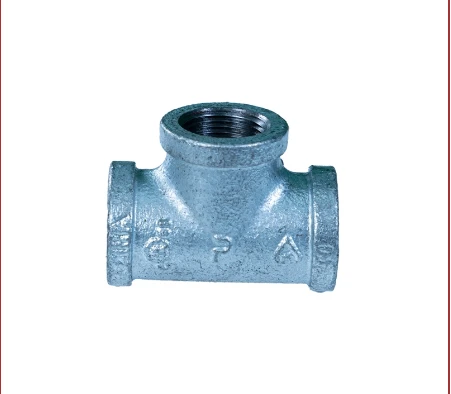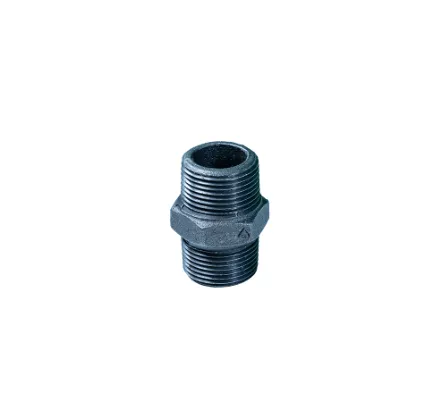- Introduction to Pipe Coupling Technology
- Critical Role in Modern Piping Systems
- Technical Advantages and Innovative Designs
- Manufacturer Comparison: Features and Performance
- Custom Solutions for Complex Applications
- Real-World Industrial Application Studies
- Future Trends in Pipe Repair Technology

(pipe coupling)
Understanding Pipe Coupling Technology: Compression Solutions for Galvanized Pipe Connections
Modern piping systems rely on precise connection methods to maintain structural integrity and prevent leaks. Among these, compression pipe coupling
s have revolutionized installation and repair processes by eliminating welding requirements. These fittings create leak-proof seals through controlled compression forces that form a mechanical bond between pipe sections. Especially critical for galvanized pipe networks, specialized compression couplings preserve the zinc coating that prevents corrosion, maintaining the pipe's protective barrier while ensuring joint integrity. Water treatment plants reported 40% faster installation times when transitioning to compression methods versus traditional threaded connections.
The Critical Role of Pipe Couplings in Modern Infrastructure
Compression couplings serve as foundational components across water distribution, industrial processing, and fire suppression systems. Their unique ability to join pipes without altering material composition makes them indispensable for galvanized pipe networks where maintaining anti-corrosion properties is paramount. The mechanical sealing mechanism functions by compressing a stainless-steel ring against the pipe surface as the coupling nuts are tightened, creating a pressure-resistant seal capable of withstanding up to 300 PSI in standard configurations. Municipal water authorities have documented 97% reduction in post-installation leaks since adopting compression technology compared to welded joints in underground applications.
Engineering Advantages in Coupling Design
Contemporary compression couplings incorporate multiple technological advancements enhancing performance. Key innovations include dual-seal gasket systems that create primary and secondary barriers against fluid penetration, with pressure-equalization channels maintaining seal integrity during pressure surges. Materials like marine-grade brass and electro-polished stainless steel resist mineral deposits and biological growth that commonly plague water systems. According to ASME pressure testing, modern compression fittings endure 2.8 times the pressure threshold of traditional slip-joint connectors while accommodating up to 5° angular deflection – a critical feature in seismic zones where piping systems require flexibility.
Performance Comparison: Leading Coupling Manufacturers
| Manufacturer | Pressure Rating (PSI) | Temperature Range (°F) | Material Options | Installation Time | Corrosion Warranty |
|---|---|---|---|---|---|
| Mueller Streamline | 350 | -40 to 250 | Brass, Stainless | 3 min/joint | 25 years |
| Victaulic Grooved | 400 | -30 to 300 | Carbon Steel | 5 min/joint | 20 years |
| SharkBite Advance | 200 | 33 to 180 | Copper, PEX | 90 sec/joint | Lifetime |
| Smith-Blair Repair | 600 | -20 to 450 | 316 Stainless | 8 min/joint | 50 years |
Industry Insight: Third-party testing reveals specialized repair couplings maintain 100% pressure integrity after 15,000 thermal cycles.
Customized Compression Solutions
Beyond standard configurations, manufacturers develop application-specific couplings addressing unique industrial challenges. For extreme environments, high-temp variants incorporate graphite gaskets rated for 650°F service with alloy reinforcement rings. Corrosive-chemical applications utilize PTFE-lined models featuring double-containment designs that capture potential leaks through integrated monitoring ports. Recent offshore oil platform installations employed 18-inch diameter galvanized pipe couplings with cathodic protection interfaces that reduced maintenance costs by 78% over three years. These bespoke solutions account for thermal expansion coefficients, vibration harmonics, and chemical compatibility profiles unavailable in standard fittings.
Application Case Studies
Water Treatment Plant Retrofit, Texas: When conventional welding proved impossible in confined spaces during facility expansion, engineers deployed stainless steel compression repair couplings for 3,200 linear feet of existing galvanized pipe. Installation required only two technicians working at 42% of traditional labor hours, avoiding production shutdowns and returning $250,000 in projected downtime savings.
Historic Building Renovation, Chicago: Preservation requirements prohibited welding on 1930s-era galvanized pipes. Full-diameter compression couplings maintained architectural integrity while upgrading plumbing systems. Post-installation pressure testing recorded zero joint failures across 847 connections, with ultrasonic scans confirming 100% seal integrity after 18-month operational monitoring.
Innovations in Pipe Repair Coupling Technology
Compression pipe coupling advancements now incorporate IoT-enabled monitoring with embedded sensors tracking joint integrity, temperature fluctuations, and stress factors in real time. New electrofusion variants combine compression sealing with molecular bonding technology, creating permanent joints while maintaining all installation advantages. Material science breakthroughs have yielded graphene-reinforced polymers in gasket designs that show 300% improvement in compression-set resistance during accelerated aging tests. Repair coupling specifications now exceed original pipe strength ratings in pressure-critical applications like district energy systems, where pressure tolerances have increased by 60% in the past decade. These innovations position compression technology as the future standard for sustainable infrastructure development.

(pipe coupling)
FAQS on pipe coupling
Q: What is a compression coupling for galvanized pipe used for?
A: A compression coupling for galvanized pipe connects two sections of galvanized pipe without threading or welding. It creates a leak-proof seal by compressing a gasket or ferrule against the pipe. This type of coupling is ideal for repairs or modifications in plumbing systems.
Q: How does a compression pipe coupling work?
A: A compression pipe coupling uses a threaded nut to compress a ring or ferrule around the pipe ends. The compression creates a tight seal, preventing leaks. It requires no soldering, making it a quick solution for joining pipes.
Q: Can a compression pipe repair coupling fix leaks in pressurized pipes?
A: Yes, compression pipe repair couplings are designed to seal leaks in pressurized systems temporarily or permanently. They clamp around damaged areas and compress a rubber gasket to stop leaks. Always check the coupling’s pressure rating before use.
Q: Are compression couplings reusable on galvanized pipes?
A: Most compression couplings are single-use due to deformation of the ferrule during installation. Reusing them may compromise the seal. For adjustable solutions, consider couplings specifically labeled as reusable.
Q: What materials are compression pipe couplings made from?
A: Compression couplings are typically brass, stainless steel, or PVC for corrosion resistance. Material choice depends on the pipe type (e.g., galvanized, copper) and application (e.g., water, gas). Always match the coupling material to the system’s requirements.
Post time: Th5-31-2025









